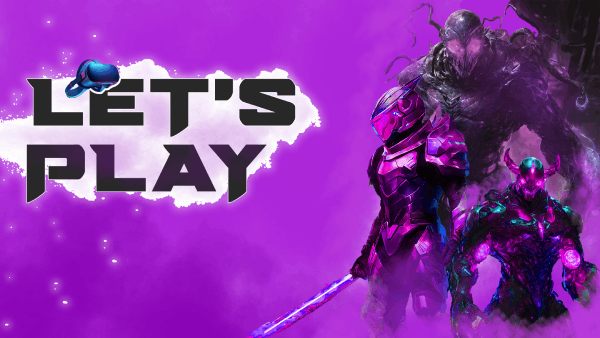
3d Avatar Creation – Mastering Guide To Designing And Customizing Your Own Avatar
The emergence of Virtual Reality (VR) technology has completely transformed the way we perceive and interact with digital content. It immerses us in virtual worlds that blur the line between reality and the digital realm. As technology continues to advance, one aspect that has captured the imagination of many of us is the concept of VR avatars. These digital representations of ourselves in the virtual realm have come a long way, evolving from basic 3D models to highly realistic and customizable virtual beings. In this blog post, we will explore the fascinating world of VR avatars and how they have transformed our digital presence.
What Are Avatars?
Avatar is a digital representation of a person, typically created to represent their identity and actions within a virtual reality environment. These avatars can be customized to resemble the user’s physical appearance. When VR technology first emerged, avatars were simplistic representations of users, often limited to basic shapes and colors.
These early avatars were a means to interact with the virtual environment but lacked the personalization and immersion we now associate with VR. However, they laid the foundation for what was to come – a digital representation that could truly reflect our unique identities.
Unique Functionalities Of Avatars
Realistic Representation
VR avatars can closely mimic users’ real-world appearances, expressions, and movements, creating a more lifelike and personalized experience.
Non-Verbal Communication
Avatars enable users to communicate through body language, gestures, and facial expressions, enhancing the depth of interactions beyond text or voice communication.
Immersive Social Interaction
VR avatars enable users to socialize and interact with others in virtual spaces, engaging in activities like playing games, attending events, or simply hanging out.
Customization and Personalization
Users can create avatars that closely resemble their physical appearances in the realms of fantasy and create entirely new identities. Users can choose facial features, body types, clothing, and accessories.
Accessibility
VR avatars help users with disabilities to participate in virtual experiences by providing them with ways to navigate and interact that might be more suited to their abilities.
Virtual Exploration
Users can use avatars to explore remote or fantastical locations, granting access to places that might otherwise be challenging or impossible to visit.
A Step-By-Step Guide To Creating 3d Avatars
Conceptualize Your Avatar
Start by defining the characteristics of your avatar. Consider its gender, age, style, and personality. Think about the purpose of the avatar – whether it’s for gaming, social interaction, education, or any other application.
Design the Avatar
Use 3D modeling software to create the visual design of your avatar. You can start from scratch or use pre-existing templates. Pay attention to details like facial features, clothing, accessories, and any unique elements you want to include.
Modeling and UV Mapping
Once you have the design, create a 3D model of the avatar. Use tools like Blender, Maya, or ZBrush for this purpose. Rigging involves adding a skeletal structure to the model, which enables it to move realistically. Proper rigging is crucial for natural movements in VR. Apply textures to the 3D model to give it a realistic appearance. UV mapping is the process of unwrapping the 3D model’s surfaces to apply 2D textures accurately.
Avatar Integration
Decide which VR platform you want to use for your avatars, such as Oculus Rift, HTC Vive, or a web-based VR platform. Each platform may have specific requirements and tools for avatar integration. Depending on the VR platform, you’ll need to integrate the avatar into your VR environment. This can involve using development tools like Unity or Unreal Engine. Import your avatar assets into the VR development environment and set up the necessary scripts and components to control its behavior and interactions.
Testing and Refinement
Test the avatar in the VR environment to ensure that it functions as intended. Gather feedback from testers and make necessary adjustments to improve the avatar’s appearance, movements, and interactions.
Launch the avatar
Once you’re satisfied with the avatar’s performance and interactions, you can launch your VR experience featuring the 3D avatar. Continue to gather user feedback and improve the avatar’s design and functionality to enhance the overall experience.
Avatars Role In The Top 3 Sectors
Gaming
3D Avatar Creation in gaming offers a three-dimensional, lifelike representation of a player or character within a virtual environment. These avatars are meticulously crafted using advanced graphics and animation techniques, enabling them to exhibit a wide range of emotions, movements, and interactions. 3D avatars have revolutionized social interactions within gaming communities.
Players can engage in multiplayer experiences, where their avatars interact with those of other players. Whether it’s teaming up for cooperative missions, engaging in competitive battles, or simply chatting in virtual spaces, 3D avatars facilitate social bonds and foster a sense of connection.
Fashion
3D Avatar Creation in fashion has become increasingly popular in recent years, allowing brands, designers, and consumers to explore new ways of showcasing and experiencing fashion. Brands and designers can create virtual fashion shows using 3D avatars, eliminating the need for physical runway events.
Some fashion brands have collaborated with virtual influencers who are 3D avatars. These avatars can model and promote clothing lines, acting as brand ambassadors in digital and social media campaigns.
Metaverse
Metaverse game development company assures in offering the best 3D Avatar creation in the metaverse. Creating a metaverse 3D avatar involves a combination of technologies, including computer graphics, virtual reality (VR), augmented reality (AR), and artificial intelligence (AI). As the metaverse expands across different platforms and devices, avatars get designed to work seamlessly across various virtual environments, games, social media, and applications.
End Notes
VR avatars have come a long way since their humble beginnings, transforming our digital presence and revolutionizing the way we interact in virtual environments. The level of customization, realism, and social presence they offer has opened up new avenues for communication, collaboration, and self-expression. If you are interested in developing an application based on VR avatars then this is the right time to approach a reputed metaverse development company.
The future of VR Avatars continues to grow, from real-time facial tracking and eye movements to voice recognition and AI integration, the future holds endless possibilities. Imagine having conversations with virtual beings that not only look and move like real people but can also respond intelligently and realistically.





